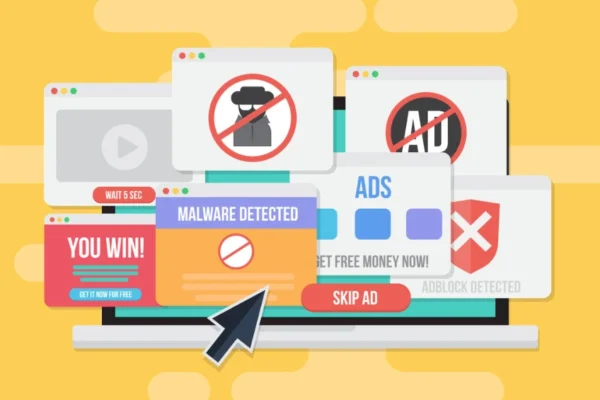In an age where screens are everywhere, parents and educators wonder how to make sure technology is safe for kids. Ensuring digital safety means balancing benefits with protections, setting boundaries, and guiding responsible use. This guide outlines practical tips to help ensure technology is safe for kids in today’s fast-paced digital world.
1. Understand the Digital Landscape
To make sure technology is safe for kids, begin by familiarizing yourself with the platforms they use. Whether it’s educational apps, social media, games, or video-sharing services, parents need to understand features and risks, like content exposure, in-app purchases, privacy settings, and chat functions. Observing your child’s favorite apps firsthand teaches you how to set effective safeguards and explain risks in relatable ways.
2. Set Up Age-Appropriate Devices & Accounts
A key step in ensuring technology is safe for kids is creating accounts with the correct age settings. Many providers restrict features based on age tags, so inputting accurate birthdates ensures easier compliance with COPPA and GDPR-K. Choose kid-focused devices or profiles with built‑in parental controls, then lock access to device settings to prevent unapproved changes.
3. Use Built‑In Controls & Safety Features
Modern devices come with tools to help make sure technology is safe for kids. On phones and tablets, enable screen-time limits, content filters, and privacy safeguards. Gaming consoles and streaming services allow you to manage friend requests, communication, and mature media access. For laptops and desktops, robust parental control software helps filter web content and track usage. Use lock codes or PINs to prevent kids from disabling these controls.
4. Teach Digital Literacy & Critical Thinking
Technology is safe for kids when they understand both its power and pitfalls. Teach them to:
-
Identify reliable vs. misleading info online.
-
Recognize personal info that shouldn’t be shared.
-
Handle stranger contact, both online and in chat.
-
Resist cyberbullying and seek help if needed.
Encourage discussions about what they encounter and how it makes them feel. A confident kid is more likely to make smart choices online.
5. Guide Responsible Screen-Time Use
Overuse of screens can impact sleep, focus, and mood. To ensure technology is safe for kids, parents should set balanced routines. Designate specific tech-free zones (like bedrooms at night or during meals). Model moderation yourself—kids emulate adult habits. Choose quality screen time, such as interactive learning games or family movie nights, rather than endless scrolling.
6. Monitor Online Activity Ethically
Monitoring is key to making sure technology is safe for kids, but it works best when coupled with transparency. Let them know that software tracks app usage, websites visited, and screen time. Encourage open conversations: ask what they like online, who they’re chatting with, and which apps they prefer. Avoid surveillance-style monitoring, as it can erode trust—balance oversight with respect.
7. Enable Safe Communication Channels
Technology is safe for kids when they can easily reach their parents. Set up reliable communication tools: a kid-friendly messaging app, family group chat, or emergency call function. Ensure they know how to contact you at any time. Make it clear they can approach you if they come across something upsetting or worrying—no questions asked.
8. Encourage Creation, Not Just Consumption
A strong way to ensure technology is safe for kids is by encouraging them to create content—code games, make digital art, record podcasts—instead of just using. This builds digital confidence and helps them understand mechanics, permissions, and ethical content use. Offer creative challenges or guide them through safe platforms where they can showcase work in moderation.
9. Protect Privacy & Personal Data
To ensure technology is safe for kids, avoid oversharing personal information. Teach basics like:
-
Not sharing location or school details online.
-
Using avatars instead of photos.
-
Creating strong passwords for older kids.
-
Reading privacy notices carefully (with adult help).
Parents should also review privacy settings and avoid linking school or personal accounts to unfamiliar sites.
10. Stay Up to Date & Adapt
The digital world changes constantly. What was safe last year might not be safe today. Ensure technology is safe for kids by regularly reviewing the apps and services they use. Prioritize patches and updates on devices—outdated software can pose security flaws. Join parent groups, forums, or read blogs to stay aware of emerging online trends or concerns.
11. Involve Schools & Community
Making sure technology is safe for kids means expanding responsibility beyond the home. Work with teachers and schools to align technology policies. Volunteer or attend digital safety workshops. Use community toolkits and resources—many libraries and non-profits host sessions for parents and kids alike.
12. Plan for Emergencies
Even with safeguards, issues can occur. Make sure technology is safe for kids by preparing responses:
-
Identify reporting routes within apps or platforms.
-
Know how to block/report abusive content or users.
-
Teach kids to immediately report harmful messages or unauthorized charges.
-
Keep contact info for cyberbullying hotlines or support organizations.
This readiness ensures problems get handled quickly and appropriately.
13. Model Healthy Digital Habits
Children observe adult behaviors closely. If you value balanced tech use and demonstrate responsible practices—like disabling unnecessary notifications—your child is likely to follow. Let them see you pause before posting, fact-check news, or step away from screens to unwind. By modeling healthy behaviors, you anchor the principle that technology must be mastered, not borne.
14. Consider Age & Development Stages
What feels safe for a 16-year-old might not be for an 8-year-old. Keep mitigation tactics age-appropriate. Young children need more active filters and blocked apps; teens need freedom with guidance and conversations about more complex issues like sexting, privacy, or misinformation. Adjust your approach as they mature, always reinforcing the importance of digital safety.
15. Celebrate Safe & Smart Digital Use
One of the most positive ways to ensure technology is safe for kids is recognizing when they make good choices online. Praise moments when they fact‑checked information, avoided a scam, or respectfully disengaged from trolling. Reward creative, constructive digital activities. This positive reinforcement boosts their confidence and commitment to using tech responsibly.
Conclusion
To make sure technology is safe for kids in a digital world, parents and caregivers must be proactive, informed, and supportive. By combining practical tools—like filters, time limits, and secure devices—with open communication, digital literacy education, and positive role modeling, families can help children thrive online. The goal isn’t to isolate them from tech but to teach them to use it wisely. When we ensure technology is safe for kids and we accompany them with guidance and trust, we empower them to enjoy its benefits while avoiding its pitfalls, building a more informed, resilient, and responsible digital generation.








